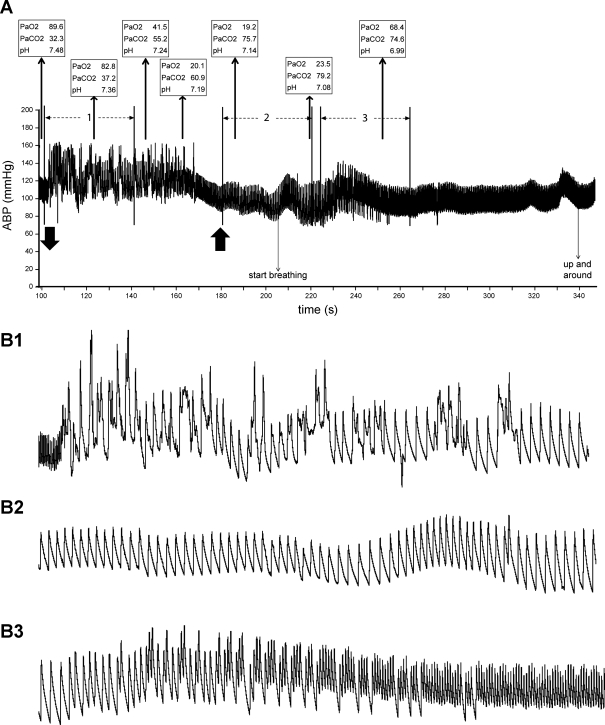Fig. 1.
Traces illustrating the typical cardiovascular behavior of a submerged rat brought toward its dive limit. A: trace illustrates changes in cardiovascular dynamics, as well as arterial blood chemistry over a 250-s experiment. Downward-pointing arrow on bottom indicates submersion, while the upward-pointing arrow to the right marks exit from the water. There was an immediate bradycardia and increase in arterial blood pressure (ABP) on submersion highlighted by numerous arrhythmias (the 40-s period marked 1 in A is seen on an expanded time scale in B1). After ∼70 s of submersion, ABP fell in all rats, and the arrhythmias ceased (the 40-s period marked 2 in A is shown at expanded time scale in B2). This behavior continued until the rat exited the water and started to breathe again. Heart rate gradually accelerated with respiratory activity, but arrhythmias returned temporarily (the 40-s period marked 3 in A is shown at expanded time scale in B3). Note that the rat became extremely hypoxic, hypercapnic, and acidotic during submersion. PaO2, arterial Po2; PaCO2, arterial Pco2.

